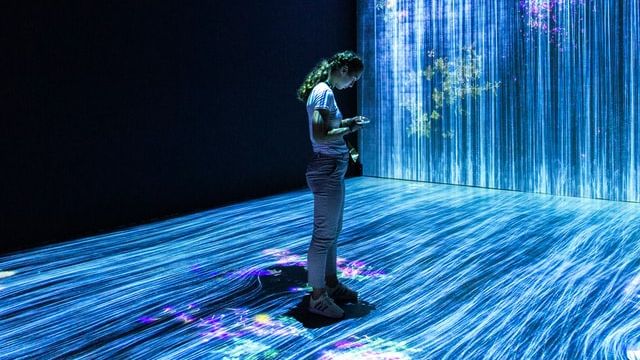Synthetic Media and the Video Industry

Vidisha Joshi

Imagine a world with no video content. You have access to the internet; however, you just see plain text and images on the web. It is a little difficult to imagine this right? Especially in the 21st century, when the production and consumption of video content have skyrocketed. The moment we open our smartphones, laptops and televisions, we are instantly introduced to the world of digital video content. Be it through video advertisements, movies, news reports, YouTube videos, Instagram reels or IGTV, we are now used to consuming video content on a rather daily basis. There is a reason why we like video content more than any other kind of digital content. Plain text and images are boring. We read them or look at them and forget them in a short span of time. Video content, on the other hand, has the ability to engage viewers. It is attractive as well as interactive in the sense that viewers tend to retain the information being conveyed for a much longer duration. This ‘engagement’ has made video content an indispensable part of our lives.
Viewers’ response to digital video content has a significant role to play in the development of the video industry. The entire video industry is valued at close to a Trillion USD, and the global video streaming industry is expected to expand at a CAGR of 21% from 2021 to 2028. Research suggests that the growth in the video production market is attributable to technologies like blockchain and artificial intelligence (‘AI’). AI, on one hand, is playing an instrumental role in improving the quality of video content, and on the other hand, is revolutionizing the way video content is produced and edited.
One of the ways AI is impacting the digital video industry is through synthetic media. As the name suggests, synthetic media is media which is synthesized. Thus, any text, image, audio or video which is generated partially or fully with the help of AI is termed as synthetic media.
Generally, the entire video industry is based on four pillars-
i. Script,
ii. Recording,
iii. Editing and
iv. Distribution.
This process involves the participation of scriptwriters, cinematographers, actors, editors and voice talent, among many more. It takes a lot of time to move from the first stage of conceptualization of an idea to the final stage of its realization owing to the number of human elements involved in the process. It is both time-consuming as well as costly. This is where synthetic media comes into the picture. With the help of machine learning (‘ML’), the production of video without actors, editors, cinematographers and voice talent has become a reality. All that is required is a creative idea and a script. The AI does the remaining work for you.
There are a number of reasons why the integration of synthetic media into the video industry has the potential to transform the way video content is being produced and consumed-
i. It reduces the cost of production- You can easily create a video with photoreal/digital avatars and even customize them. The avatar will say whatever you type and will act in the manner you want it to act. You basically become the director of the video and the AI does the rest of the work for you. Therefore, you save money by not hiring actors and editors.
ii. Synthetic video media can be customized to speak in the language you select- With the help of natural language processing and natural language generation, AI technology basically ‘learns’ different languages and accents. This saves a lot of money and effort used for translating a video in different languages for audience from around the world. The AI basically does the work of voice talent for you. All you are required to do is select the language to which you want to translate the video. The final result sounds like a human actor speaking with the native tongue.
iii. Generating and editing video content using AI is simple and quick- As opposed to normal video production where humans are involved in each step, AI technology performs the same task with a click of a button within minutes. It helps in utilizing the time, leading to an increase in the amount of video content being produced.
Synthetic media will enable an unprecedented human-computer interface. The never-ending demand for digital video content, coupled with the future of synthetic media, highlights the immense progress the video industry will be undergoing a few years down the line. Technologies like machine learning and natural language processing are the next transformational wave for video production, which will change the way video content is being produced and consumed.
The potential of synthetic media, especially in the video industry, is already being utilized in the following sectors-
E-commerce
Education
NFTs and metaverse
News delivery
Another important use case of synthetic media in the digital space is for online marketing of goods and services. Recording an ad with brand ambassadors is a nightmare for production companies. Apart from the hefty sum of money they pay to the brand ambassadors, they also need to schedule the recording according to the date and time given to them by the brand ambassadors. Procuring a studio, cinematographers, editors, costume designers etc. also require a big budget. This can make video marketing a hassle. However, with the help of synthetic media, the media house can use a photoreal avatar of the brand ambassador, with his/her permission, and create high-quality ads in no time. They are just required to enter the script, insert the digital avatar, select animation features, language, and the AI generates a video marketing ad with the brand ambassador! These ads can further be personalized depending on the audience the company will target, something which is not possible in traditional video production.
The idea of integrating synthetic media into the video industry is being harnessed at vidBoard.ai. It provides a state-of-the-art platform which converts plain text into high-quality videos with photorealistic digital humans at scale, that too with a click of a button. You are required to follow three simple steps-
i. Insert your picture or select an avatar,
ii. Type in the script, and
iii. Insert animation features
The deep learning technology then generates a completely AI-driven end-to-end video on the fly! The video is fully transcribed and can be translated into more than 40 languages. You can also enhance your videos by adding slides, choosing templates, adding text, inserting video and image assets, including music, and animate the elements to bring your video to life. vidBoard.ai also envisions cloning the voices of real humans. This will allow businesses to create videos with not only the digital avatars of their brand ambassadors but with their voices too. The underlying objective of vidBoard.ai is to automate video creation and editing, thereby reducing the time, effort and money spent on it.